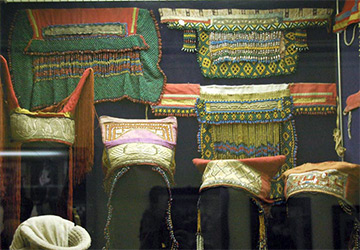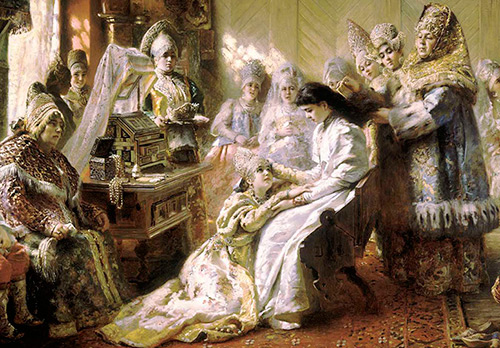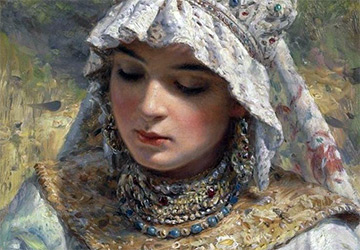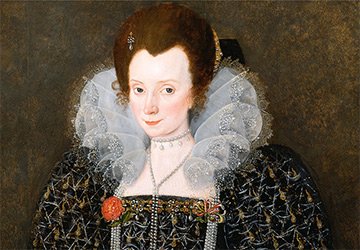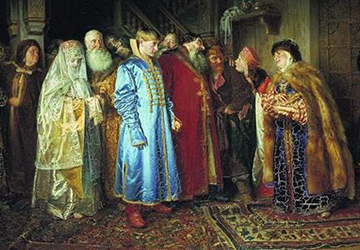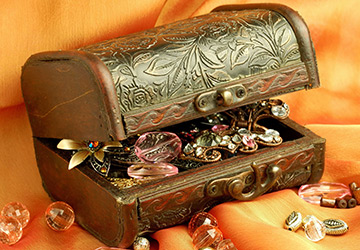Art
Konstantin Makovsky - paintings and biography of the artist
Konstantin Makovsky is a famous Russian artist who painted many paintings of boyar Russia in the 17th century. The furnishings of the boyars' choir, the clothes of the heroes of the paintings, and the boyars and hawthorns themselves are reproduced so reliably that individual chapters of the history of Russia can be studied from the artist's paintings.
Accuracy in writing individual details and motifs of patterns woven by the hands of Russian embroiderers, or clear ornaments on carved goblets and bowls, surprises and delights viewers of the past and present.
Luxurious clothes embroidered with pearls, headdresses of amazing beauty, of that time, beautiful hawthorns decorated with precious necklaces, boyars in brocade caftans - you can feel in everything with what love for Russian national beauty and culture, for the rich heritage of our ancestors, these paintings were painted ... You can stand for a long time next to each of them - admire the Russian ornamentation and feel pride in yourself and at the same time sadness, sadness that much has been lost, has not survived and is not preserved today. Therefore, such pictures, in which there are unique evidence of the culture of the Russian land, are especially valuable to us.
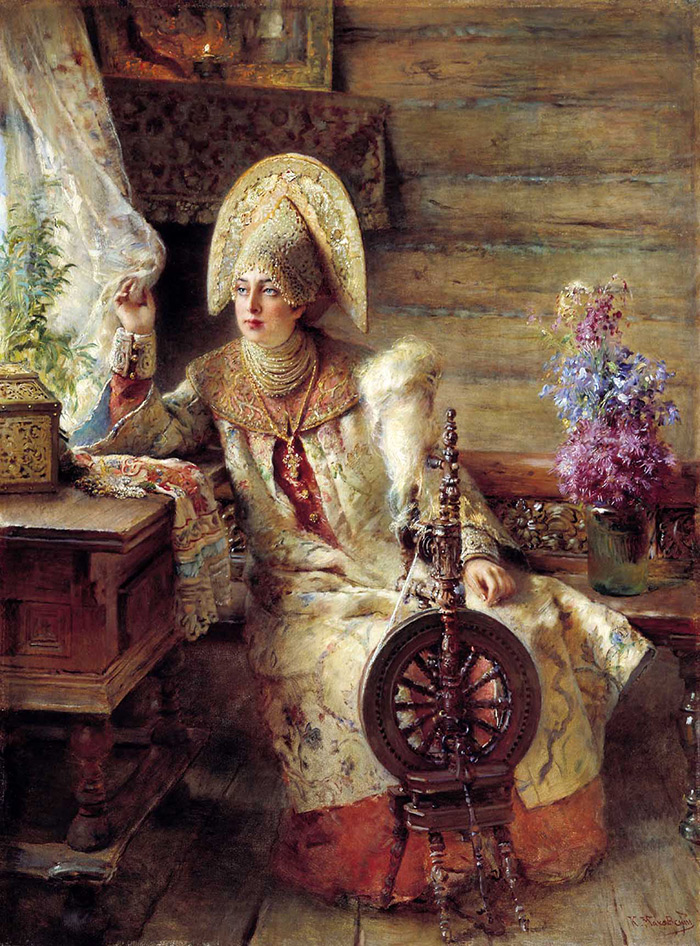
Biography of the artist Konstantin Makovsky
Konstantin Egorovich Makovsky (1839 - 1915) was born into a family with an atmosphere of art worship. Many famous figures of culture and art have visited their house. The artist's father, Yegor Ivanovich Makovsky, was one of the largest collectors in Moscow in the second quarter of the 19th century. His hobby was works of fine art, mostly old engraving.
And Konstantin Yegorovich, having inherited his father's enthusiasm, collected all the masterpieces of Russian ancient craftsmanship, but it was "beautiful antiquity." Something he skillfully attached in living rooms and workshops, and then used in his paintings, and something he simply exhibited in his old large ebony cabinet, in order to then admire and admire the beauty and skill of Russian masters.
Ancient household utensils stood on the cornice of the fireplace: silver ladles, cups, washstands, fans - items from boyar times. Vintage boyar brocade suits, multi-colored sundresses, shoulder straps studded with pearls, kokoshniks embroidered with pearl lace - all this can be seen in the artist's paintings. And besides the things lovingly collected by Konstantin Yegorovich, people who gathered around him also took part in his paintings. Sometimes scenes from boyar life were acted out, which were then transferred to the canvas. And this undoubtedly aroused the keen interest of the audience, because through Makovsky's paintings they were introduced to the knowledge of the history of Russia and the culture of their ancestors.
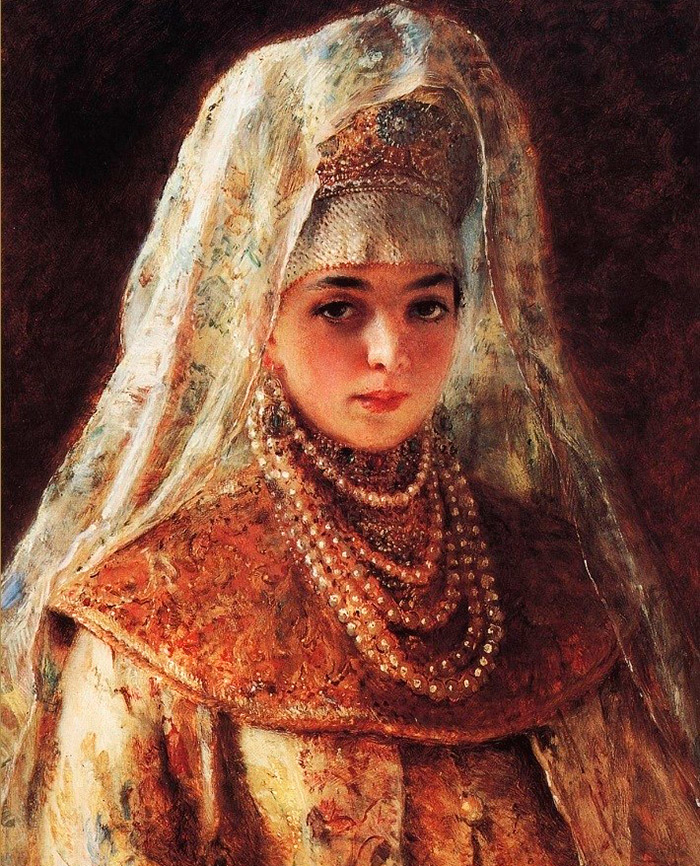
The artist's daughter in her memoirs told how "... magnificent" living pictures "from the boyar life were put on ...". Sometimes there were up to 150 people invited to these evenings, among whom were representatives of ancient families, descendants of those whom the artist portrayed. They “... deftly and beautifully dressed in brocade and velvet clothes… ”In order to reproduce the scene conceived by the artist. This is how the paintings appeared - "The Wedding Feast", "The Choice of the Bride" and many other paintings.
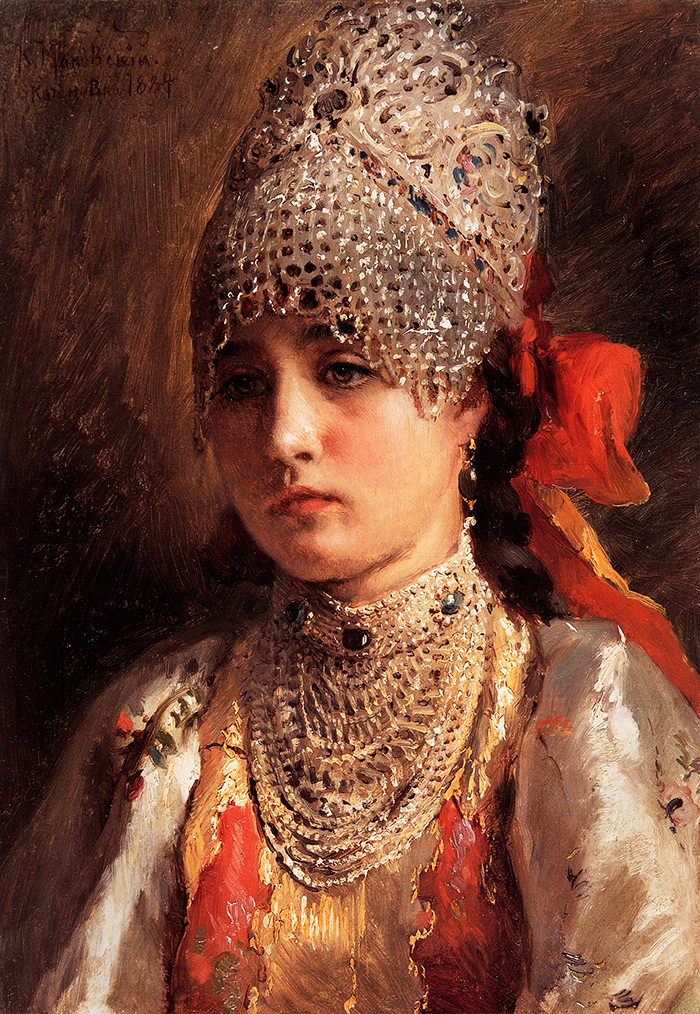
Paintings by Konstantin Makovsky
On the canvases of K.E. Makovsky in bright luxurious costumes from his own collection created images of beautiful women, contemporaries of the artist. You look at the picture and feel that the Russian ornamental pattern is shining, the embroidered sundress of the Russian beauty glitters with silk and silver. And if you pay attention, we will see that in each picture the hawthorn girls have completely different headdresses. Indeed, the artist's collection of kokoshniks and headdresses was the richest and most valuable acquisition.
By collecting items of Russian antiquity, K.E. Makovsky continued to study all his life. Collecting masterpieces of Russian masters, the artist joined the history of Russia and, admiring them, was inspired by new ideas. Now, his canvases evoke in us not only admiration for the richest heritage of our ancestors, but also the desire to learn more and more about our homeland.
The writer E.I. Fortunato, who was fortunate enough to be with him as a model.
K.E. Makovsky was not only an artist. Communicating with prominent scientists-historians, he himself became a great specialist in the field of Russian antiquity. K.E. Makovsky strove to preserve the artistic heritage of Russia. Therefore, it is no coincidence that in 1915 he became a member of the Society for the Revival of Artistic Russia, whose main task was to preserve, study and promote Russian antiquity.
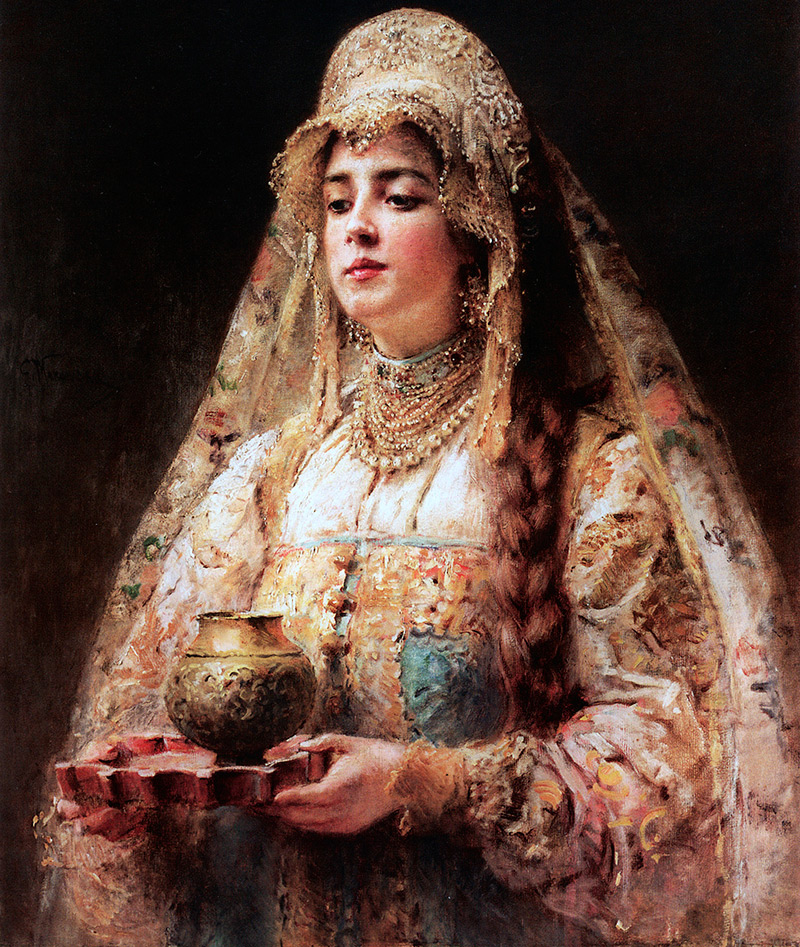
It is bitter and sad that the collection, which had been collected for half a century, which occupied such an important place in the artist's life, which became a reflection of an entire era in Russian culture, will be put up for auction just six months after his death. In September 1915, K.E. Makovsky was hit by a street cage on one of the streets of Petrograd. Having received a severe head injury, the artist died two days later. Sudden death ruined all conceived plans ...
More than 1000 items were listed at the auction, some of them went to the capital's museums: the Russian Museum, the Hermitage, the Museum of the School of Technical Drawing of Baron Stieglitz, and Moscow museums. Many items were bought by representatives of Moscow antique firms. The original costumes, silver cups, ladles, glasses passed into the hands of prominent Moscow collectors.
But not everyone admired the paintings of K. Makovsky and his manner of work.
At the beginning of his career, K. Makovsky shared the views of the Itinerant artists, he painted peasant children ("Children Running from the Thunderstorm", "Date"), but already in the 1880s the artist irrevocably moved away from them and began to arrange personal exhibitions.
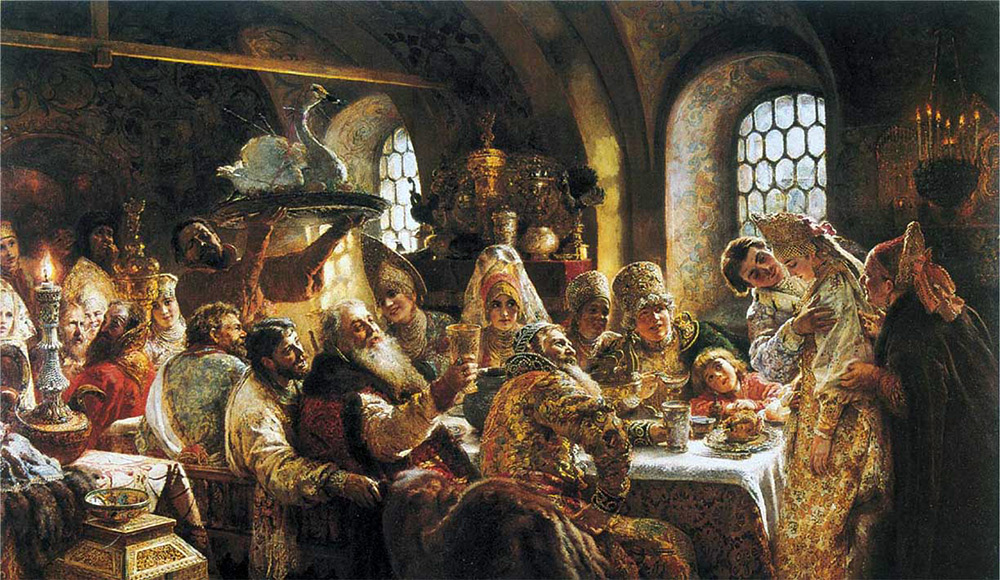
In 1883, he created the painting Boyar Wedding Feast in the 17th Century, followed by Tsar Alexei Mikhailovich's Choice of the Bride (1886), The Death of Ivan the Terrible (1888), Dressing the Bride to the Wreath (1890), Kissing rite "(1895,). The paintings were a success both in Russia and at international exhibitions. For some of them, at the 1889 World Exhibition in Paris, K. Makovsky was awarded a gold medal.
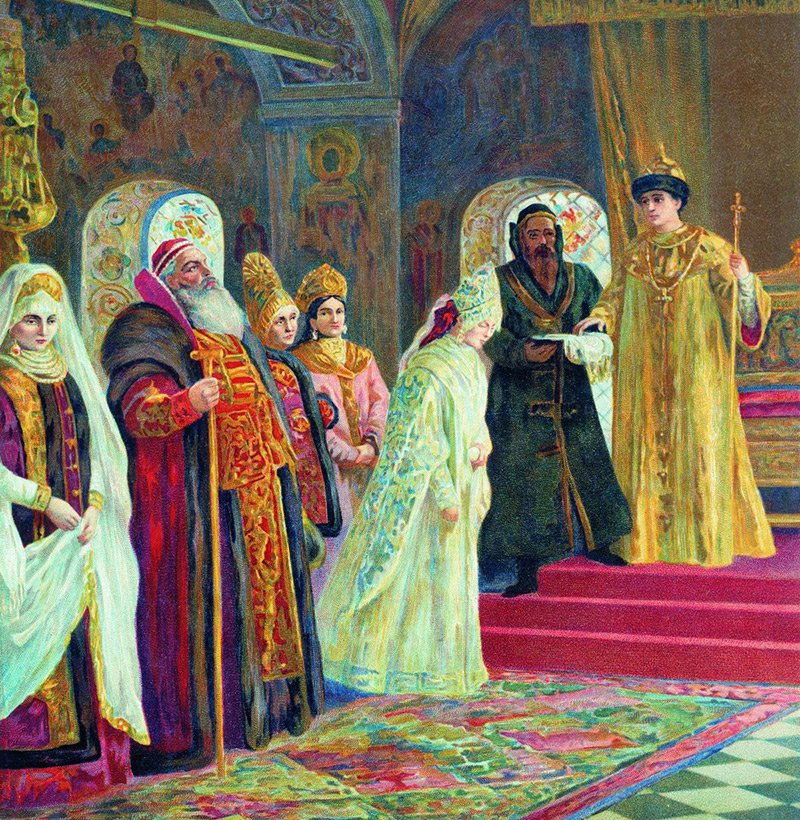
Prices for his paintings were always high. P.M. Sometimes Tretyakov could not acquire them. But foreign collectors willingly bought canvases of the "boyar" cycle, so most of the artist's works left Russia.
Thanks to this success, K.E. Makovsky became one of the richest people. Throughout his life he was surrounded by luxury that no Russian artist dreamed of. Makovsky with the same brilliance fulfilled any order on any topic. It was the latter that caused misunderstanding and even condemnation among many. Some, apparently, were jealous of the success, others believed that in the paintings the people should be present with their daily lives. But such paintings were not sold so willingly, and many believed that Makovsky wrote on those topics that were in demand, that is, for the sake of his own enrichment.
However, he always lived as he wanted and wrote what he wanted. His vision of beauty simply coincided with the requirements and requests of those people who were willing to pay big money for his paintings. His easy success became the main reason for the negative attitude towards him and his work of the Itinerant artists. He was accused of using art and his talent for material benefits.
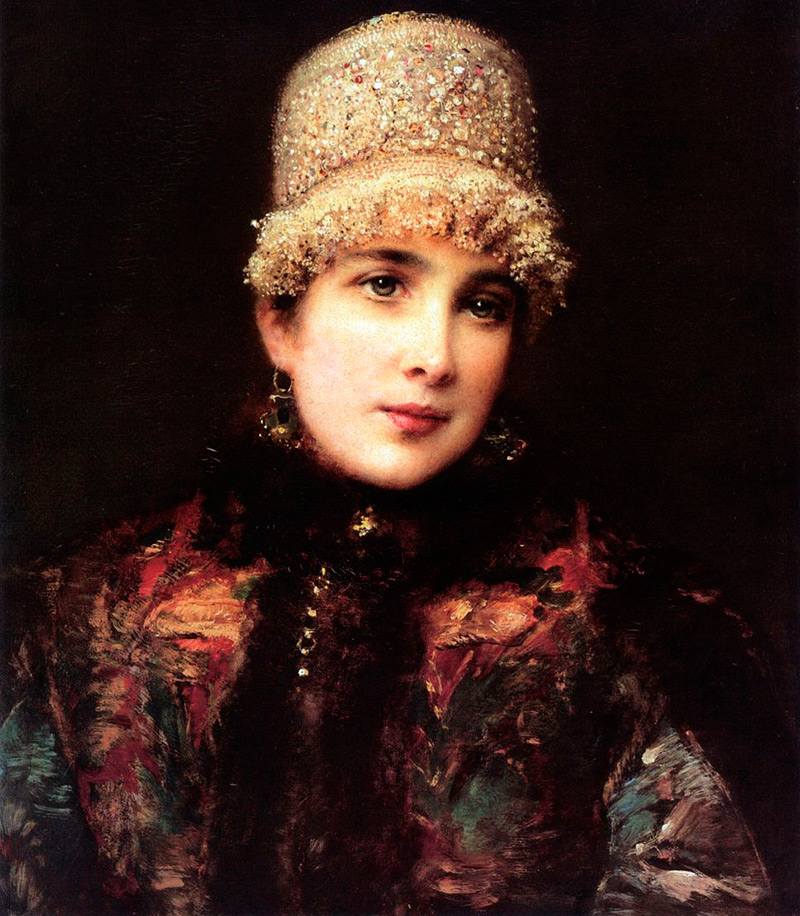
K.E. Makovsky began his artistic career with the Wanderers, exhibiting paintings on the theme of the life of the people. Over time, however, his interests changed, and from the 1880s he became a successful salon portrait painter. The fact that this happened for the sake of material wealth cannot be believed. After all, this is evidenced by his numerous collections and multifaceted talent.But it cannot be denied that Makovsky did not seek recognition abroad. In addition, the Europeans were interested in Russian history, so his work was quickly sold.
In his personal life, Makovsky was also happy. His good looks, sociability, always open and smiling gaze of clear eyes made Konstantin Yegorovich always a welcome guest. He was married three times. His first wife, Lenochka Burkova, an actress of the Alexandrinsky Theater, lived a short life with him. A charming and gentle girl brought a lot of joy and warmth into his life. But illness took her away from her earthly life early.
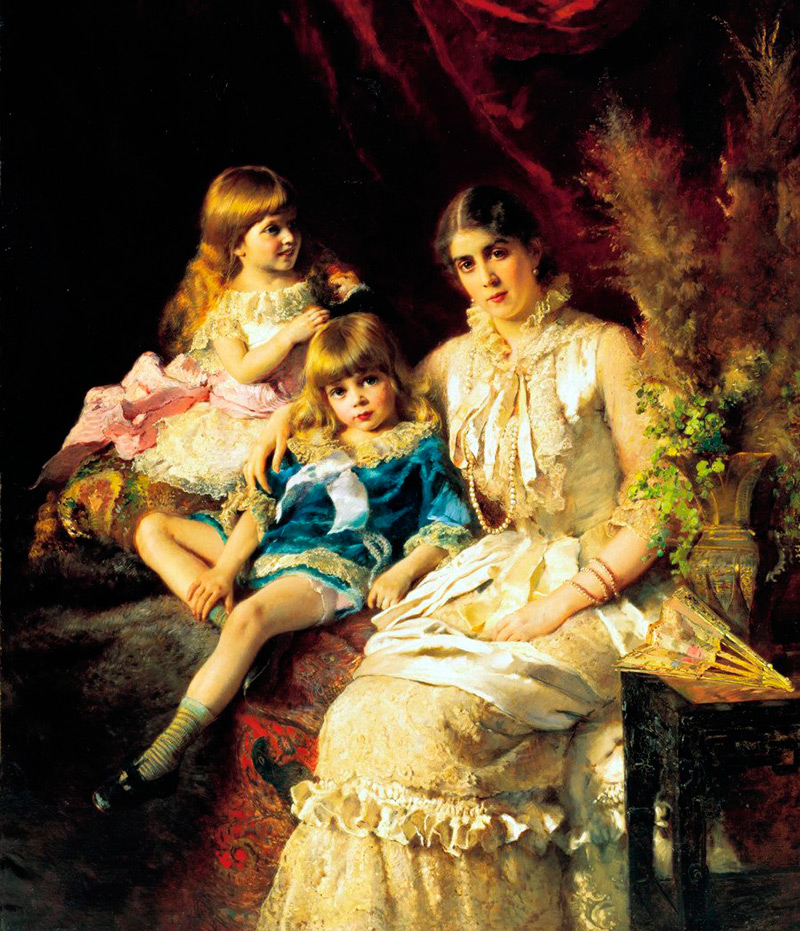
Carefree and greedy for the joys of life, Konstantin Yegorovich quickly consoled himself when he saw a girl of extraordinary beauty at the ball - Yulenka Letkova. The girl was only sixteen years old, and the charming painter was thirty-six. Soon the wedding took place. Having lived twenty years of a happy family life, Konstantin Yegorovich painted many paintings, most of which contain a cute image of his young wife. For many years, Yulia Pavlovna Makovskaya was his muse and model for portraits.
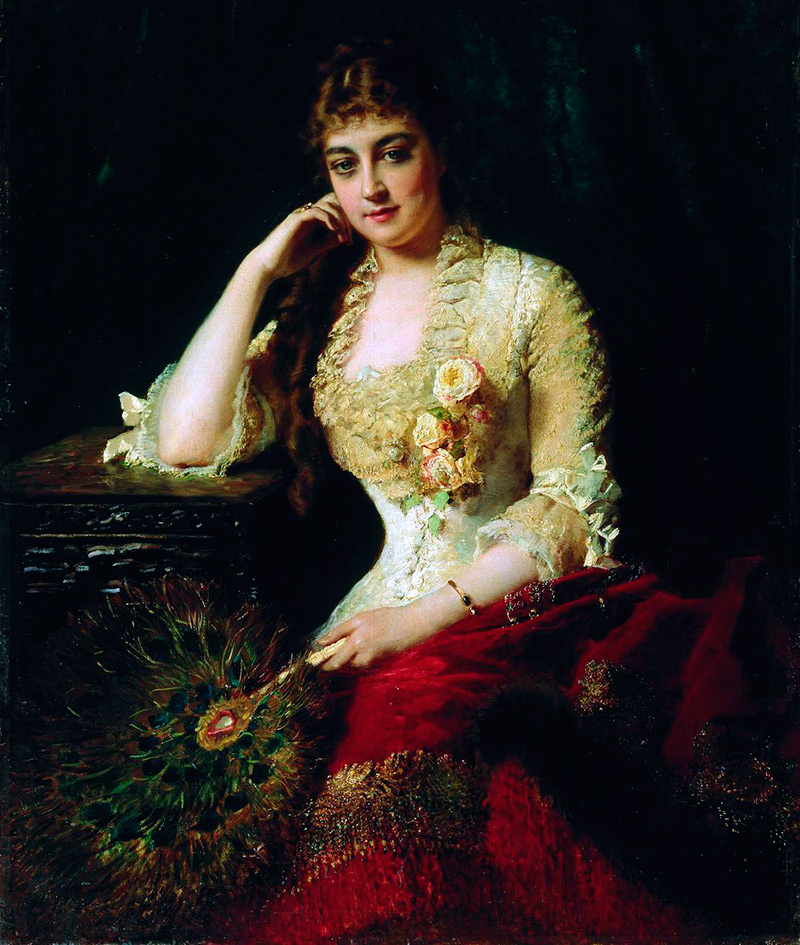
In 1889, Konstantin Makovsky went to the World Exhibition in Paris, where he exhibited several of his paintings. There he became interested in the young Maria Alekseevna Matavtina (1869-1919). In 1891, the illegitimate son Constantine was born. I had to confess everything to my wife. Yulia Pavlovna did not forgive the betrayal. A divorce was filed a few years later. And Konstantin Yegorovich continued a happy family life with his third wife, whom he also used as a model. He also often depicted his children from his second and third marriages in his canvases.
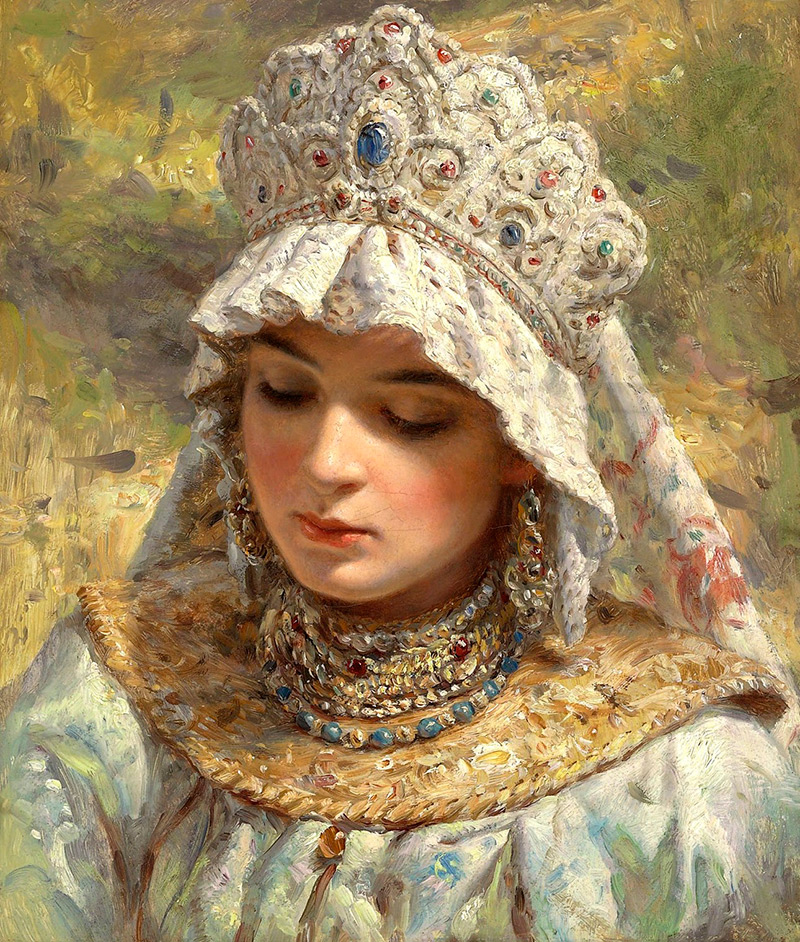
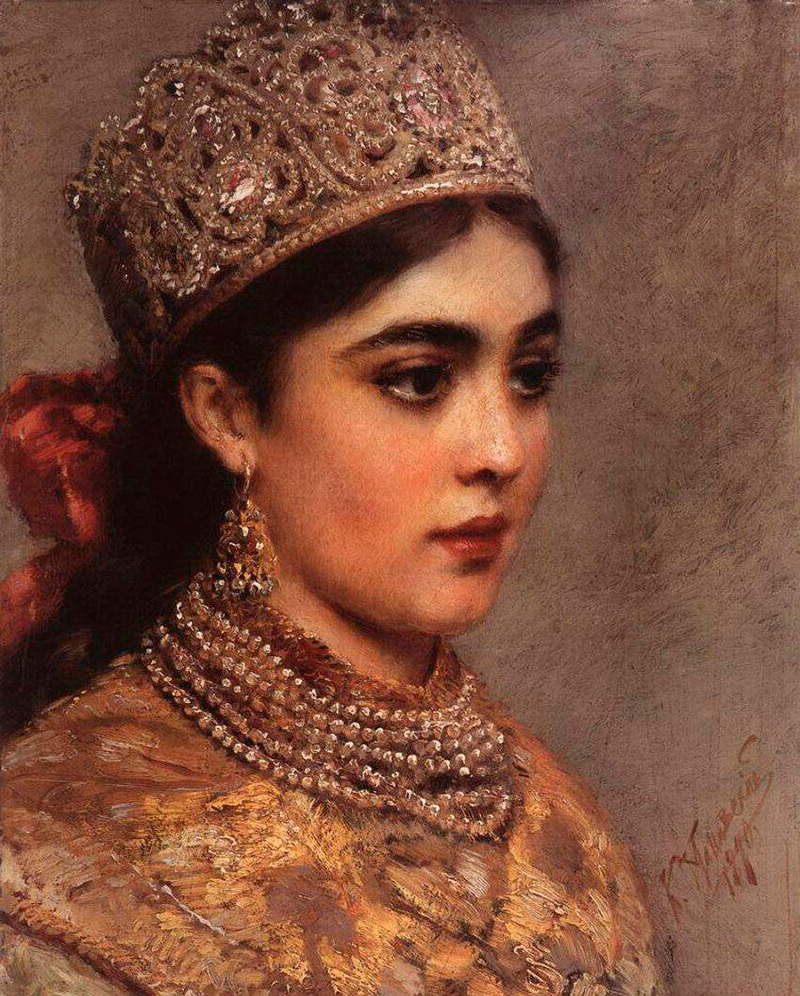
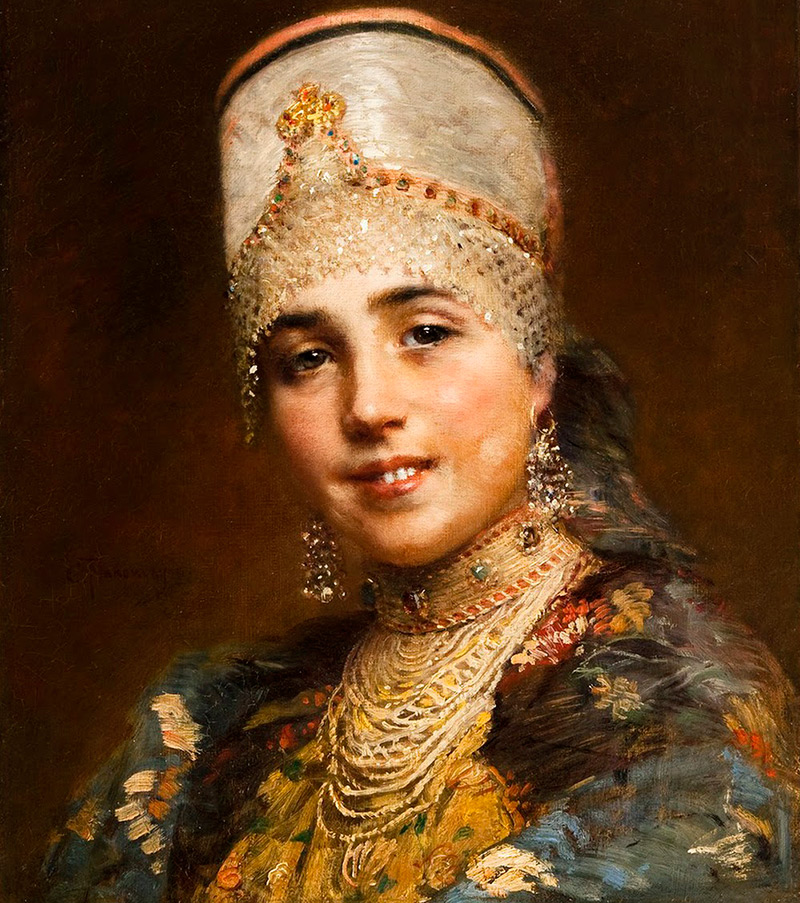
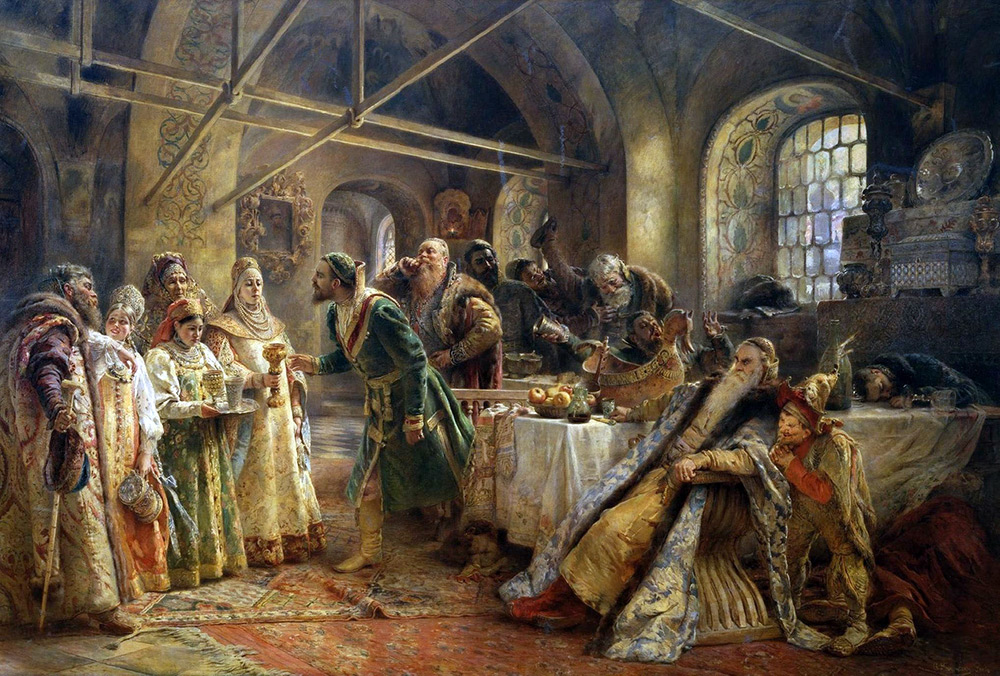
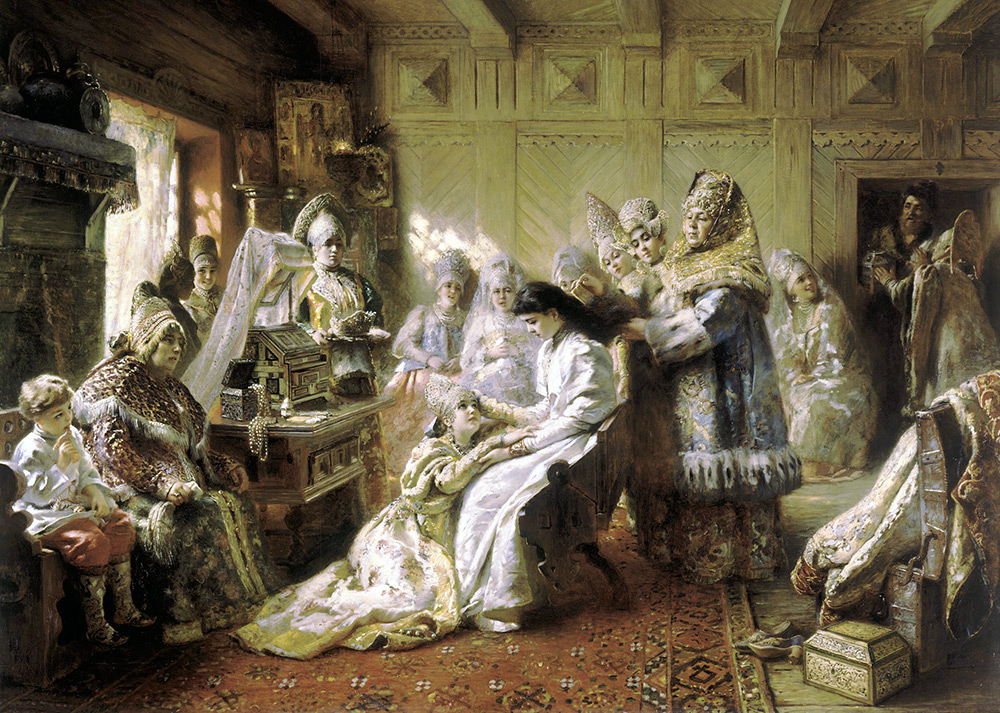
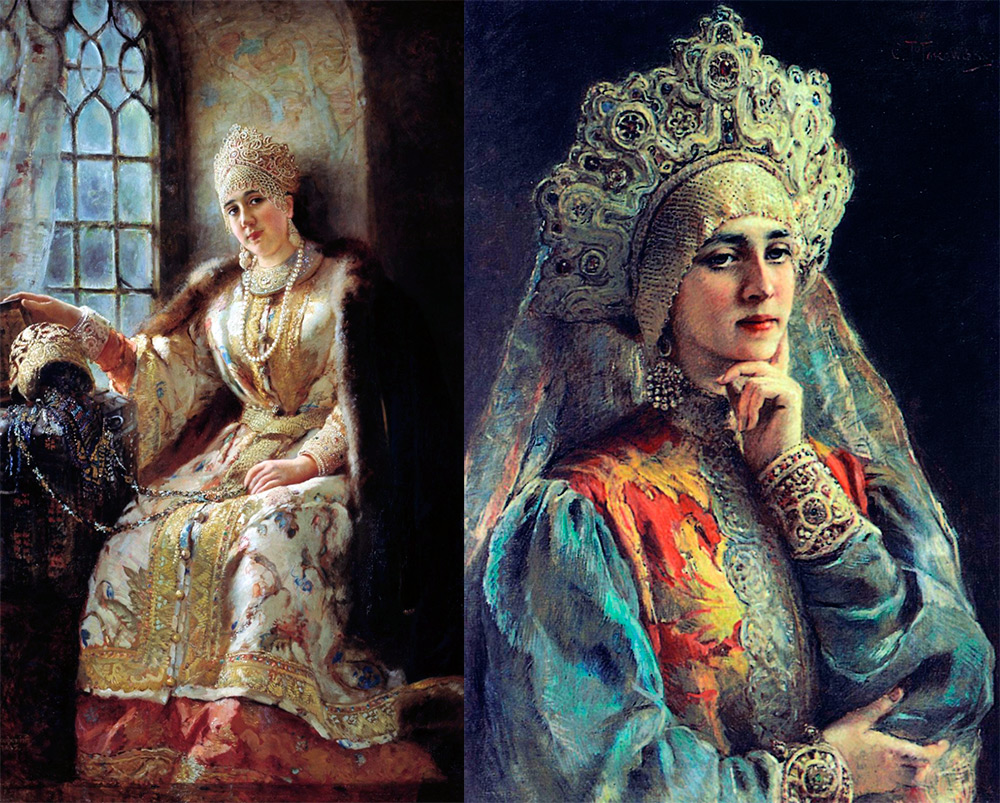
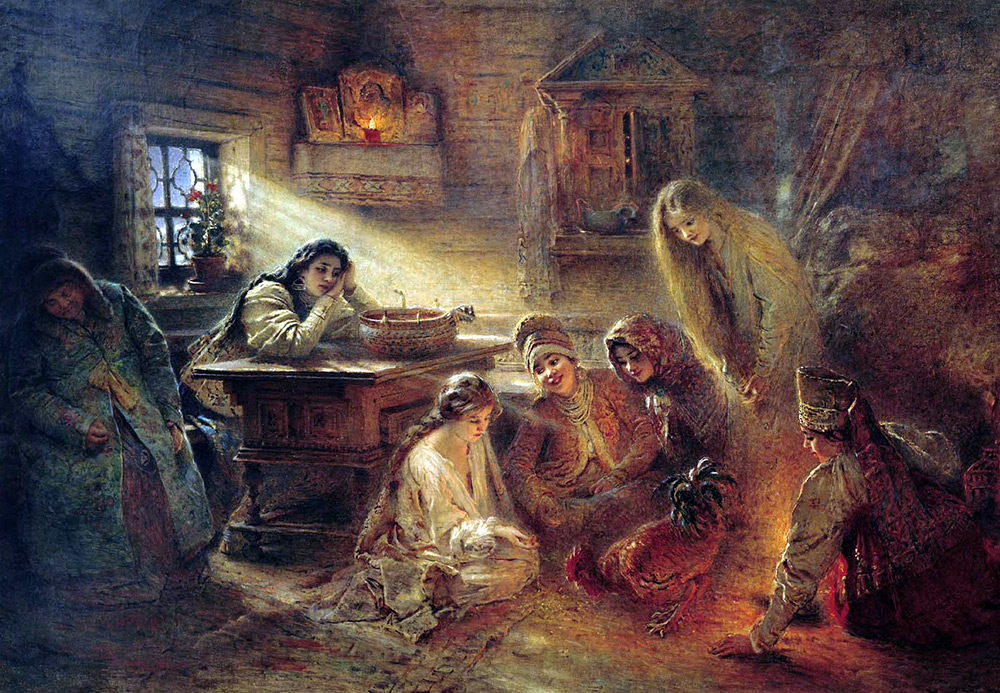
Comments and Reviews
Add a comment
Rating news
Shades of clothing that make women look younger
What shades of hair make women younger: rules and photos
Funny wedding dresses - photos and ideas
12 most expensive down jackets for the winter
How to look 25 at 40: tips from supermodels
Beautiful schoolgirls
Anti-aging haircuts and hairstyles for women
Fashionable skirts for autumn and winter
Fashionable women's trousers for the cold season
Fashionable and stylish sandals for summer 2024
Spring-summer 2024
 Fashionable dresses and tops with thin spaghetti straps
Fashionable dresses and tops with thin spaghetti straps
 Bandana tops: how to wear stylishly and beautifully
Bandana tops: how to wear stylishly and beautifully
 How to put together the perfect men's wardrobe for the summer
How to put together the perfect men's wardrobe for the summer
 Fashionable shorts for spring-summer 2024
Fashionable shorts for spring-summer 2024
 Fashionable skirts for spring-summer 2024: a guide to online shopping
Fashionable skirts for spring-summer 2024: a guide to online shopping
 The most fashionable dresses spring-summer 2024: styles and colors
The most fashionable dresses spring-summer 2024: styles and colors
 Fashionable total look 2024: ideas of images and trends
Fashionable total look 2024: ideas of images and trends
